We intended to leave by 6:30 am, but started the drive only by 7 am. This path was a bit more “adventurous” and had quite a few interesting sights. We saw very few other vehicles on the road. We made a rest stop at Reckong Peo for lunch. It had a great view of Panch Kailash parvats. Apart from that, there is nothing special about it. It is just a typical crowded mountain town with crazy traffic. We had lunch there in some small dhaba and drove off. There was a Tibetan monastery which the driver said that I should see. But it was damaged in a landslide and was closed for visitors.
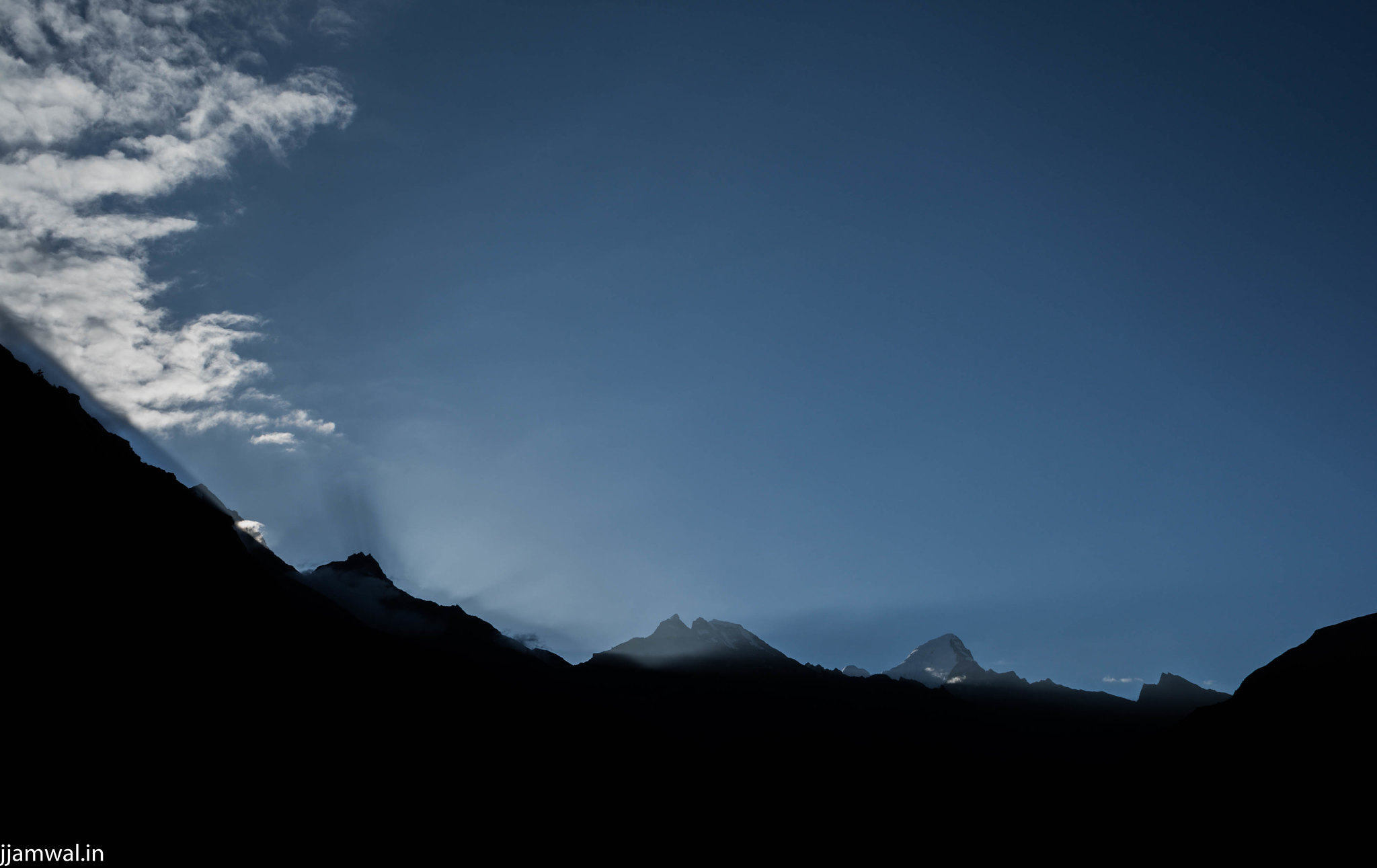
We went further up to Kalpa to get a hotel just above the village. At first glance, Kalpa seemed to be only marginally better than Reckong Peo and I wanted to move on further to Rodhi. supposedly the last Indian village on the route. It’s perhaps the 3rd or maybe 4th such “last village” I visited. But eventually settled for one near the road with good view of mountains in front and village below.. After getting some rest I walked out to explore and maybe find something interesting. I was waiting for clouds over Panch Kailash mountains to clear up but weather gods were not agreeing. The hotel I was staying in was constructed on a fruit orchard along the road and there were way too many new hotels coming up. At this rate, there’d be only hotels and nothing beautiful left there.
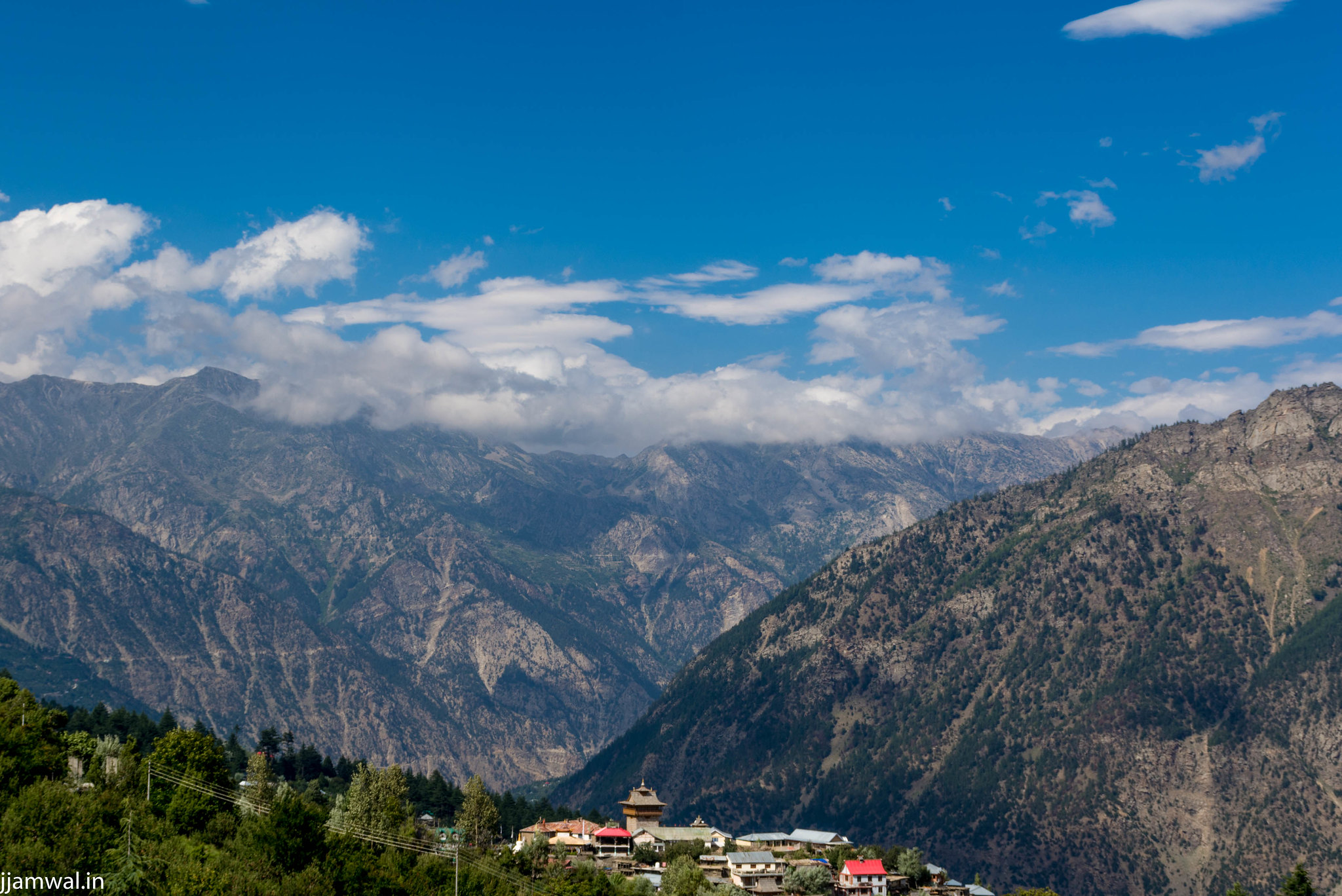
I kept walking and had the first close up view of a mysterious looking fruit tree I had first noticed in Sangla. It’s yellow brown fruits were size of a walnut and so ripe that they were falling off the branches. Perhaps I kept staring at the tree for too long because a local girl from a nearby orchard came up with some of those fruits and shoved some in my hands. I was confused and looked on blankly. She gestured at me to eat them and said local name of the fruit which I forgot. Turned out that I was staring at fresh ripe apricots. Most of the time, I’ve seen and eaten them dry. I think it was my first time eating them fresh. I tried to thank her but she was already running back.
I walked for a few minutes but didn’t find anything interesting at the time. Atleast it was quiet and the view was nice. When I reached back to the hotel, driver met me outside and said that I should see Rodhi. As I had nothing better to do, we started the drive and reached there in a few minutes. On the way, we passed a certain “suicide point”. It’s nothing but a rather straight and steep fall down the cliff, may about 700-800 meters. Someone had made a small platform kind of thing near the road and two tourists were sitting on it contemplating their place in universe or maybe gathering courage to take the leap. One can see probably dozens of such “points” all over the region in a single day. But local Indian tourists need someone to pour cement and make it official.
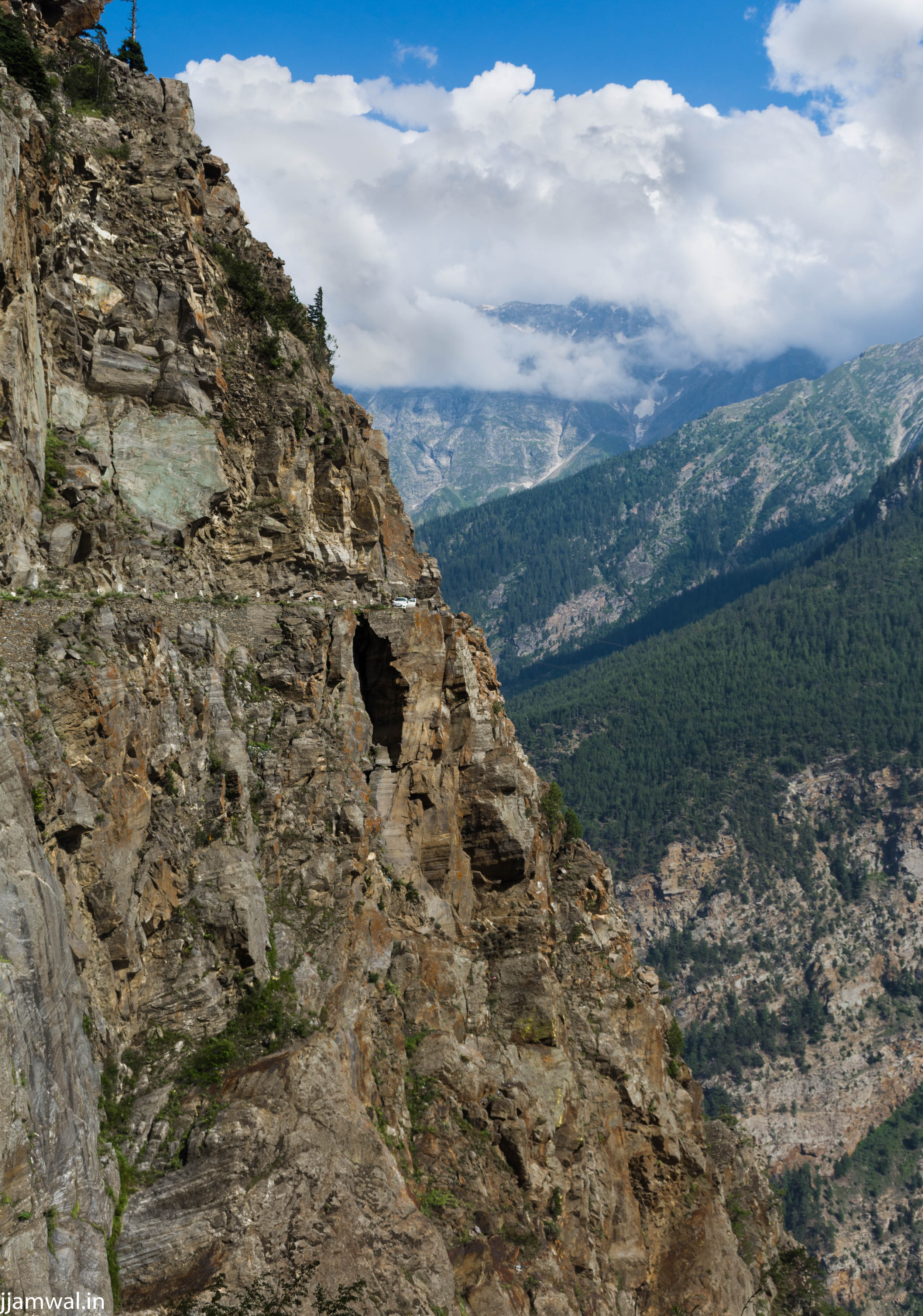
Rodhi village by itself was pretty quiet and there was only one small guest house there which was locked at that time. Apart from some labourers working on the road, there were only a few locals outside. Rest were probably having an afternoon siesta. Some other locals were working in their farms and no one paid us much attention apart from a few local children. They were too shy and quick for me to take any pictures though. We stayed there for a few minutes and then drove back to the hotel. The driver had befriended 2 hotel employees, 2 cousins from Bihar brought in to Kalpa by their uncle for summer. They had little knowledge about the place apart from some random rumours and heresy.
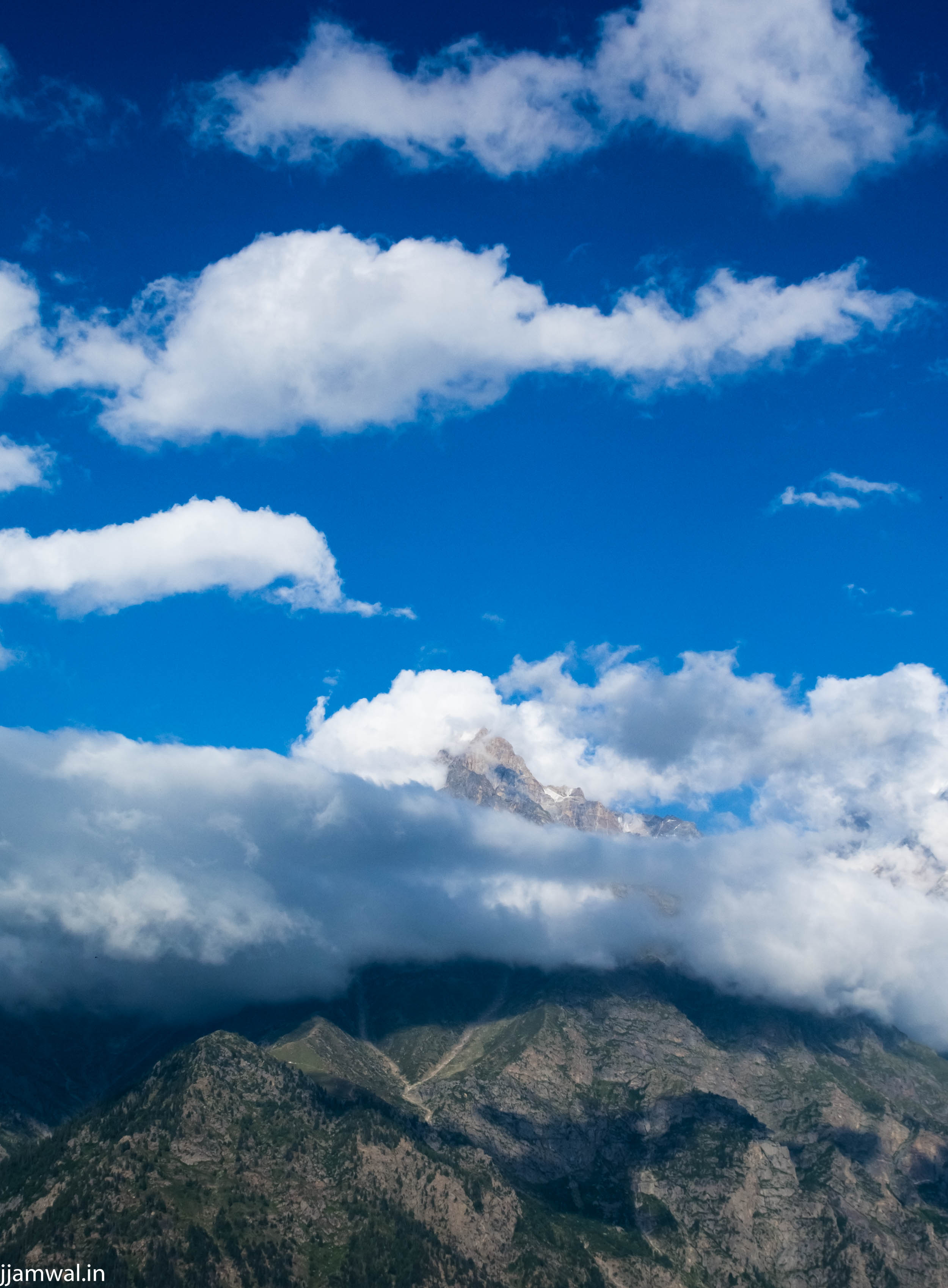
I was getting a bit restless again, so I walked down the hill to village below. The stairs led directly to the main village square or whatever one can call such place. There was a small tea shop with a poster of Mithun Chakravarty inside and a bench outside. I asked for a mint tea and sat down on bench to wait. Then I noticed this man in the picture below walking at brisk pace. He stopped in front of chai shop and probably greeted some people inside. I asked if he’d like to have some tea too. At this point, a Nepali labourer who was sitting nearby told me that I talking to a deaf and mute person. So he (Nepali labourer) asked him same question in sign language to which that local man agreed happily. He made his living working as a casual labourer and herder for the animals of local villagers. He went inside the shop to have his chai and got out after finishing it in what seemed to be just a few seconds. My mint tea was so green and sweet, that it felt like drinking mint flavoured hot Mountain Dew. But at least it had some mint and honey in it.

After tea, I walked around the streets and found two temples. There were no people inside apart from two Italians in the first one. As it’s common in this region, they were mostly made of wood and stone. But the newer structures were using modern construction methods. Most of these temples had some wooden carvings, designs, some demon like masks and two leopards (tigers ?), one male and female each on entrances. Doors were mostly made of wood, but some were covered with sheets of what seemed like silver. A lot like the one in Sarahan’s Bhima Kali temple in my previous post. The sheets and temple walls usually had Indian religious designs and gods. There was one notable addition of a soldier firing his gun on wall designs of one temple.
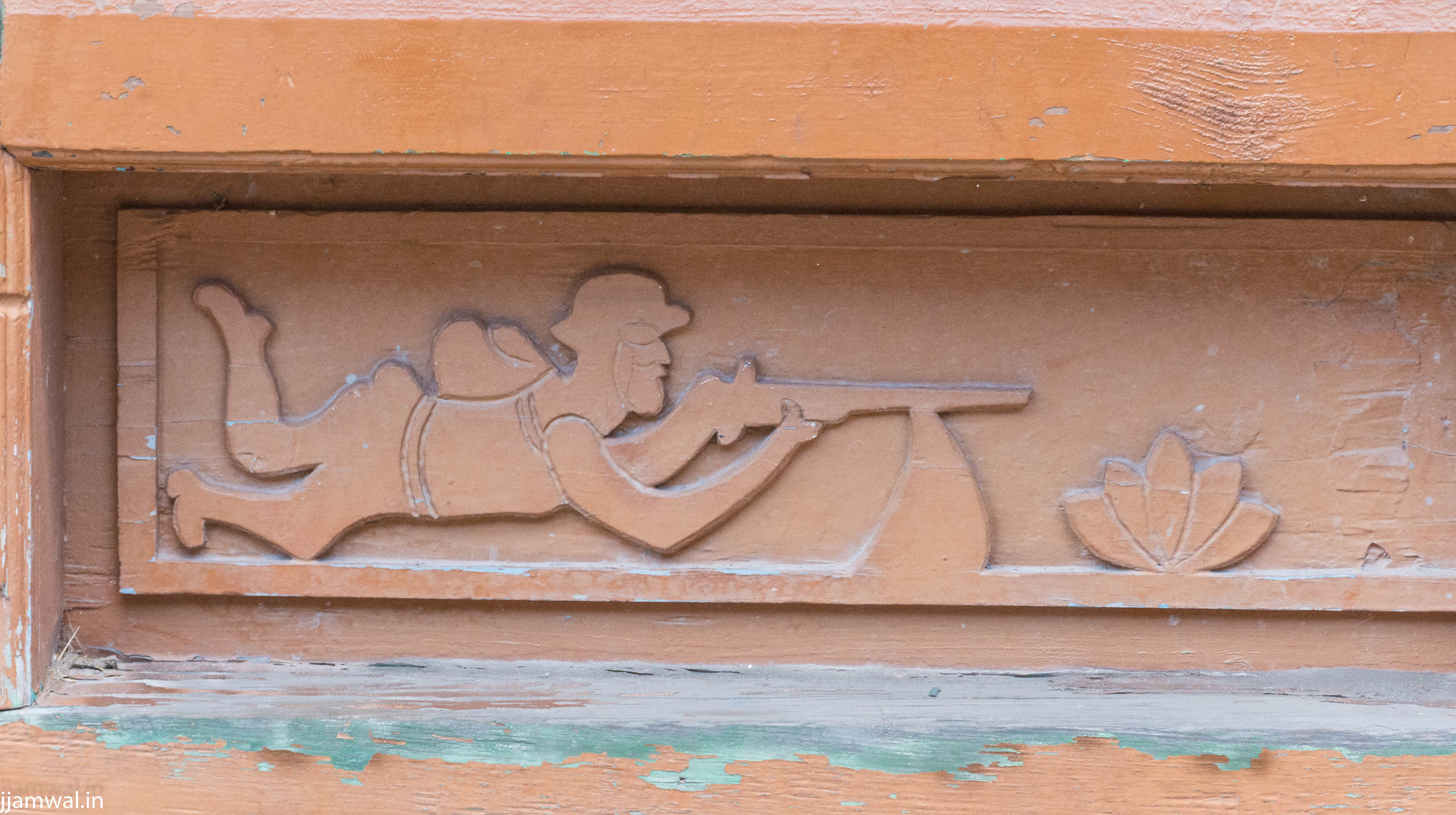
Some of the buildings in the neighbourhood were abandoned for some reason. They were mostly made of stone and seemed to be empty for years. Most new houses were made of concrete and bricks. By this time, sun was going down and it got dark rather suddenly. Most of the shopkeepers were already starting to pack up for the day. So I retraced my steps back to the hotel. Even that short climb left me gasping for breath and concerned about the hiking part of the plan. Only one other room in the hotel was occupied and even they were probably in their room. So I was the only one in dining area. I asked for some chicken curry as I imagined that I’d get NOT daal-chawal food now only after reaching Manali. There were a few books in dining area but not a single one was to my liking. I picked one up anyway and tried to read it to pass time.
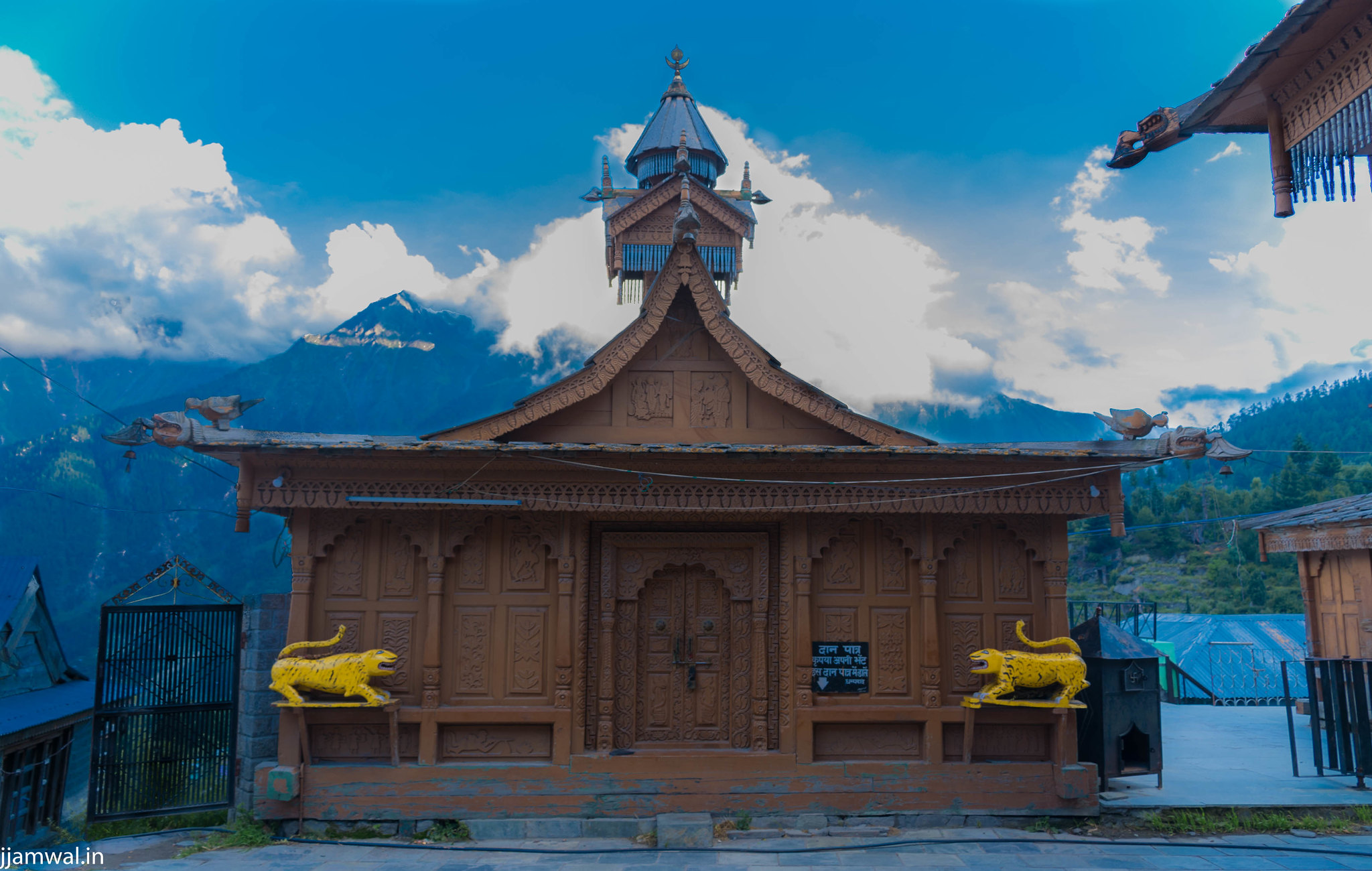
As I was finishing my meal, R Kumar, who I met in my previous trip walked in. It was a nice surprise meeting him after such a long time. I had met him two years back in Kaza at Jamaica’s hotel and spent a few days traveling in Spiti with him. He suggested that I should visit Ropa and Pin valleys and provided some more information about the route he had just covered. Before I started the trip, a small bridge near Losar was under water due to some cloud burst or maybe glacier melting. The water levels stayed high for most part of the day making it almost impossible and very risky to cross the bridge in any type of car. He did it early morning when the water levels were low, but the water still flooded inside the Gypsy. Later it had some mechanical issues and needed some repairs. He had been driving since morning and went off to sleep soon.
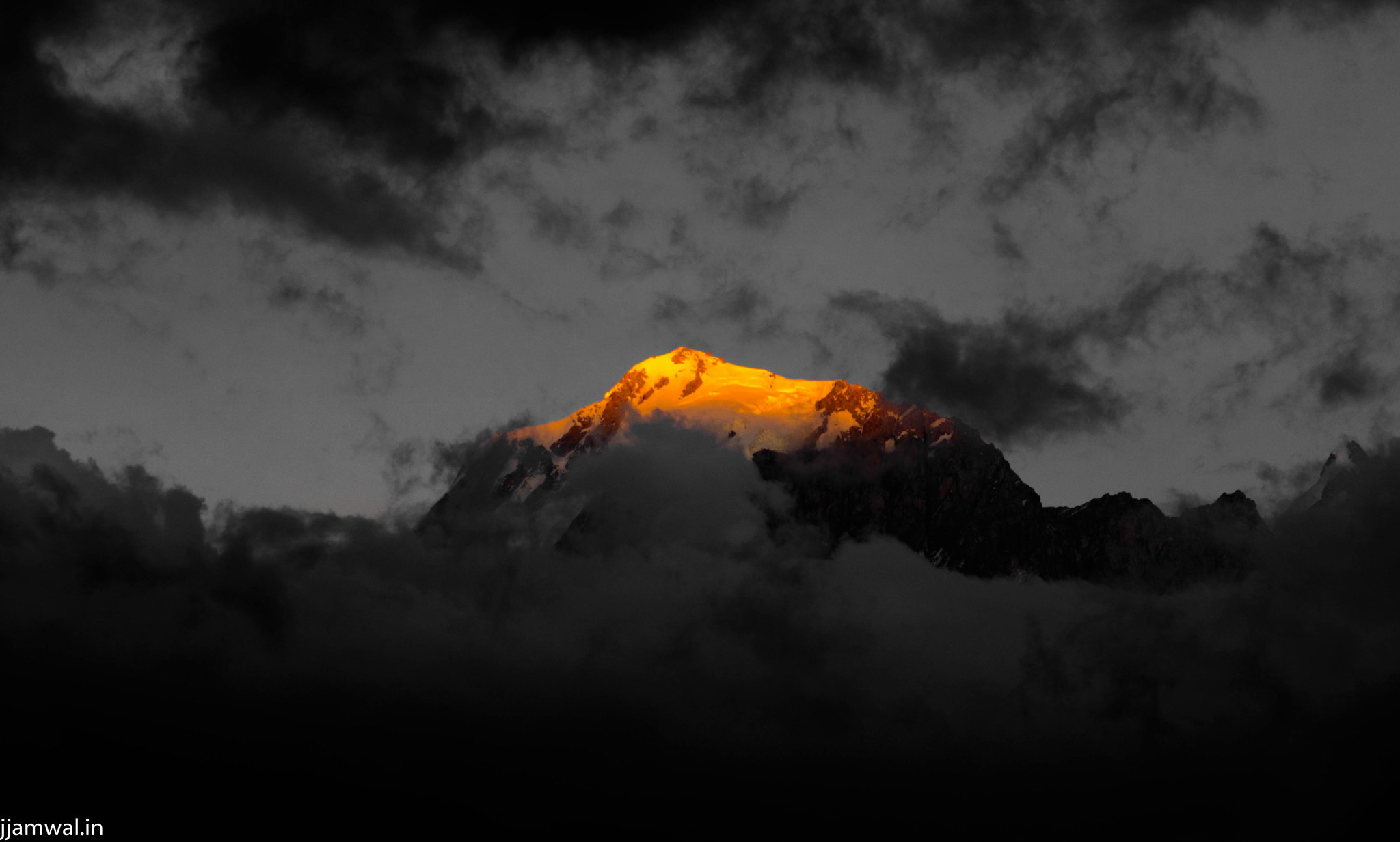
He was still asleep next morning when we left the hotel. On the way, a local woman decked up in local green dress and lots of jewelery asked for a lift till the bus stand in Reckong Peo. There was some local festival going on and she had missed the group bus. After we dropped her there, we saw quite a few local people dressed up like her on their way. It is somewhat comforting to know that there are still some places in India where even the women in their best jewelery feel comfortable enough to ask complete strangers for a lift. Compare it to Delhi or most other cities and it’s an entirely different story. If I am not forgetting someone, we gave lifts to a old woman in Ropa, a school boy near Nako and 3 women in Kibber.
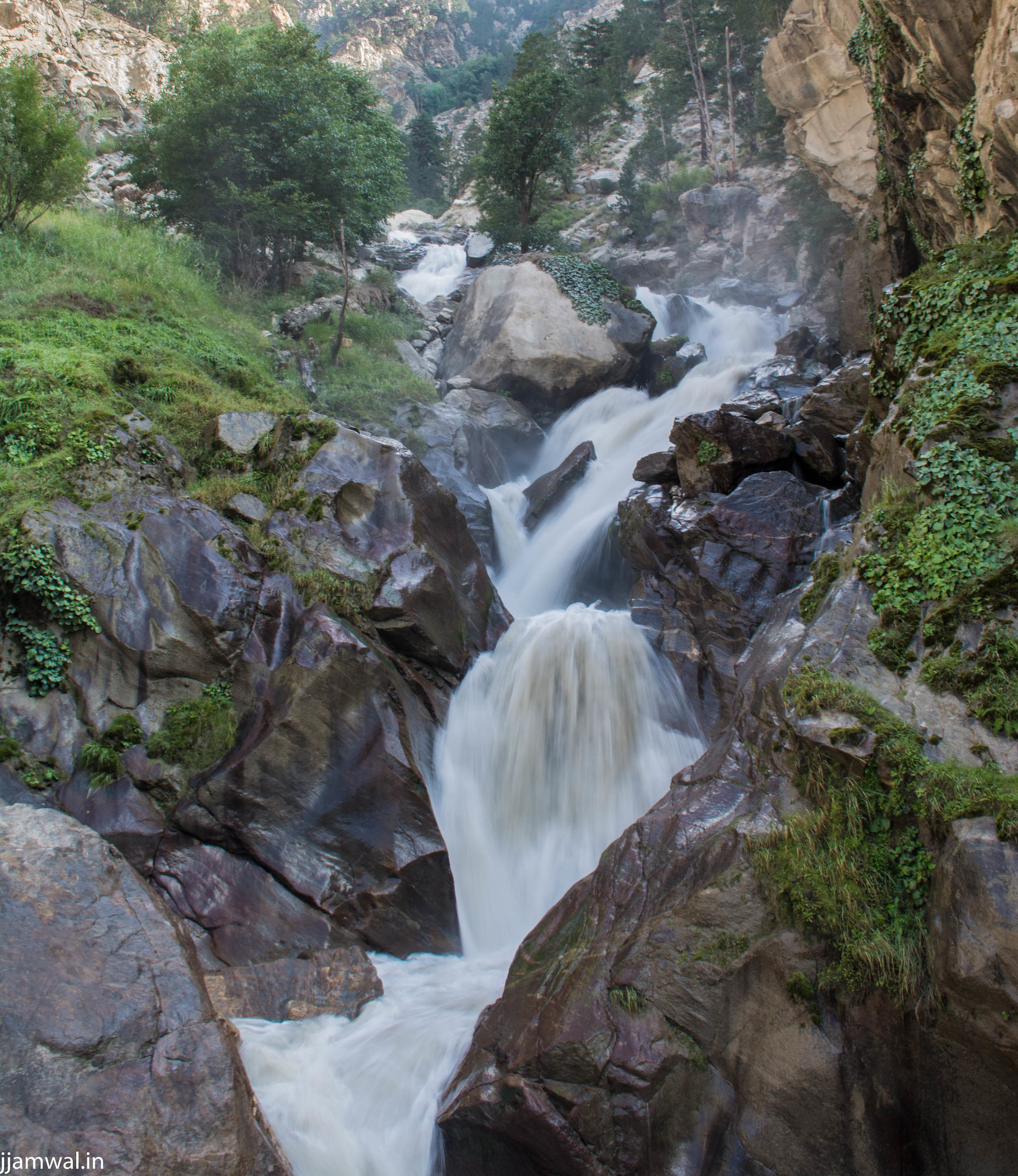
Coming back to the topic, instead of going straight towards Kaza, we took a detour to Ropa valley. I was hoping to stay there for the night. This valley is off the main road and has only 4, or maybe 5 small villages. Their names were Shyaso, Sunnam, Gyamo and Ropa being the last one. First few minutes of drive on the approach road were along a fairly strong mountain stream. But as we approached villages, we could see a number of apple farms on the mountain slopes. Such farming activity was impossible earlier. But with electric pumps, it is now possible to get water from river and irrigate such farms almost anywhere. The contrast of a large green patch on a bare brown mountain was a sight to behold. There was some flat ground near the river bank and there were a lot of farms around the settlements. On the way, a old woman asked for lift till Ropa and we dropped her where the road ended.
I asked some locals if there was some guesthouse or a place to stay. One said that there used to be one a few years back, but was demolished or maybe closed down.
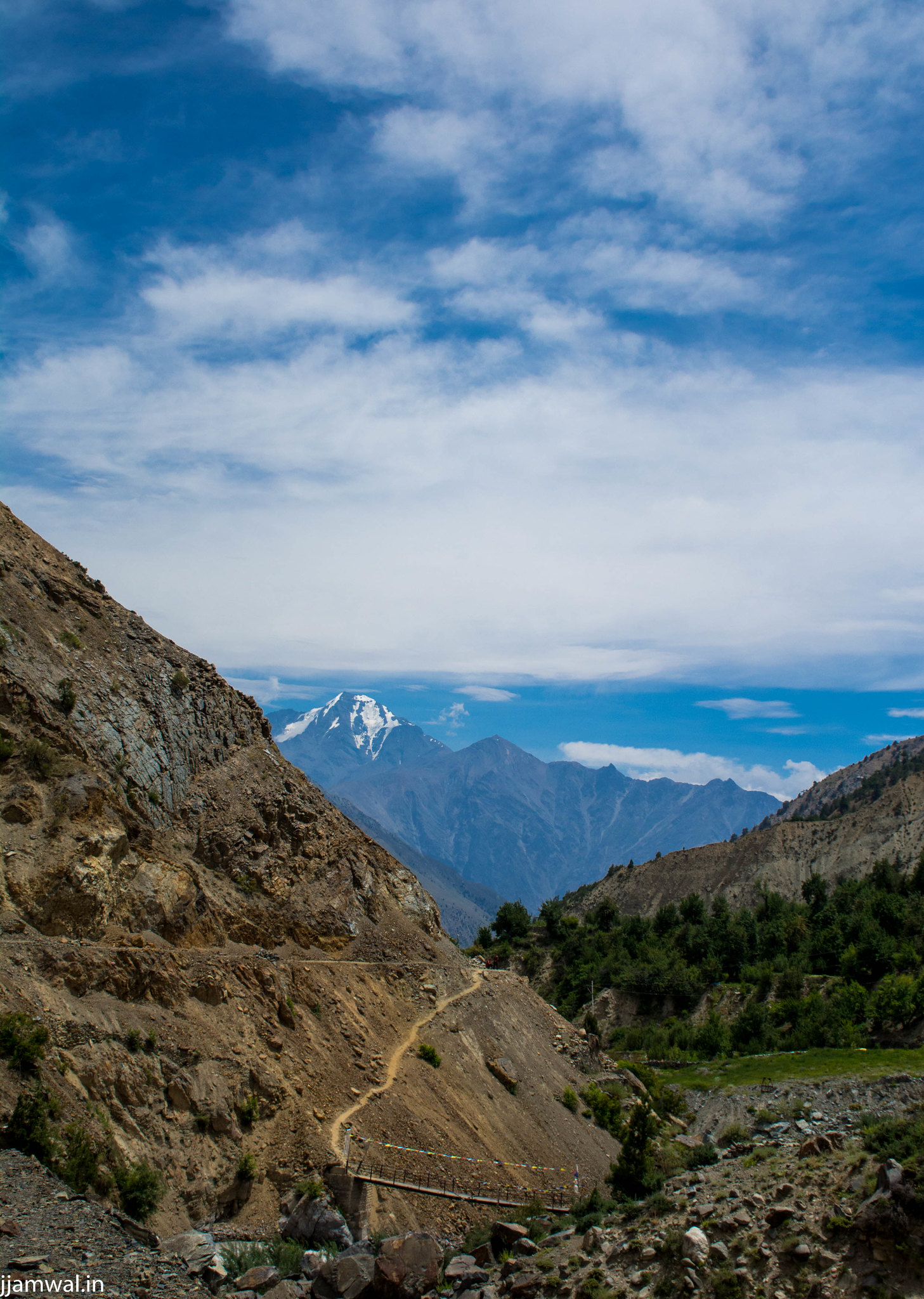
That meant that we had to go towards Nako or someplace nearby instead of spending night in Ropa village. But before that, I wanted to see if it had something interesting. As mentioned earlier, it was yet another “last village” on the road. The village was not that big and had old style as well as modern houses with a fair bit of construction going on. There was a small trail from where the houses ended going along side river. I started walking on that and noticed a large number of Himalayan mountain lizards almost everywhere basking in the sun. Their size ranged from 8 inches to probably 20. This is a common specie in the region, but I have never seen such a large number in a single place. I saw atleast 20 while walking 10 meters just along the trail.
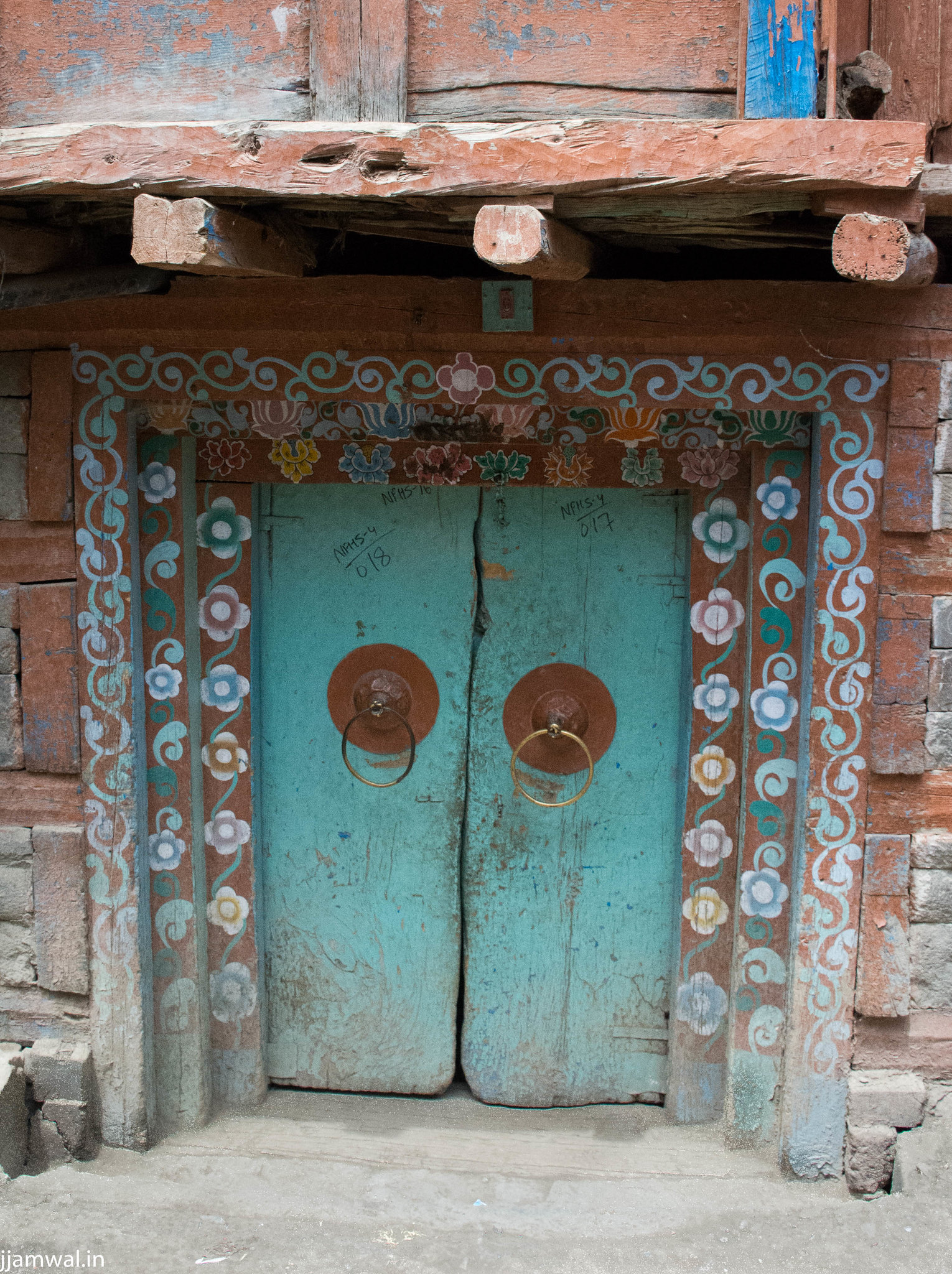
There were a few labourers ahead who were working to expand the trail and maybe make a road. They seemed surprised to see me there but were friendly enough. After a while, there were a lot more fruit orchards but the place seemed empty. Most of the apples were ripe and ready for plucking. I was briefly tempted to pluck one and get a taste. After walking on a comparatively straight path, the trail led to top of a ridge and became a bit tough to walk on. From there, I could see a small shed with a shining tin roof at some distance. I spent a little time considering whether to walk till there or not. Eventually I turned back after considering the long drive that lay ahead of us.
While on the way back, I heard a very strange sound twice and I had no idea what kind of animal made noises like that. After a minute I came across a local villagers resting in shade and asked him if he heard the same thing. He said it was a “khota” (donkey) probably tied in some shed up the hill. Seemed logical, but I have never heard a donkey make noise like that. When I got back, driver suggested that we leave for Nako instead of Kaza or Tabo.
As soon as we cleared Ropa valley and got on the main road, one front tyre of Innova got punctured by a sharp stone. The tyre nuts had probably expanded due to the heat and we could get them off only after pouring 2 bottles full of water on them. Later, we had to stop at Pooh and get some more repairs done.
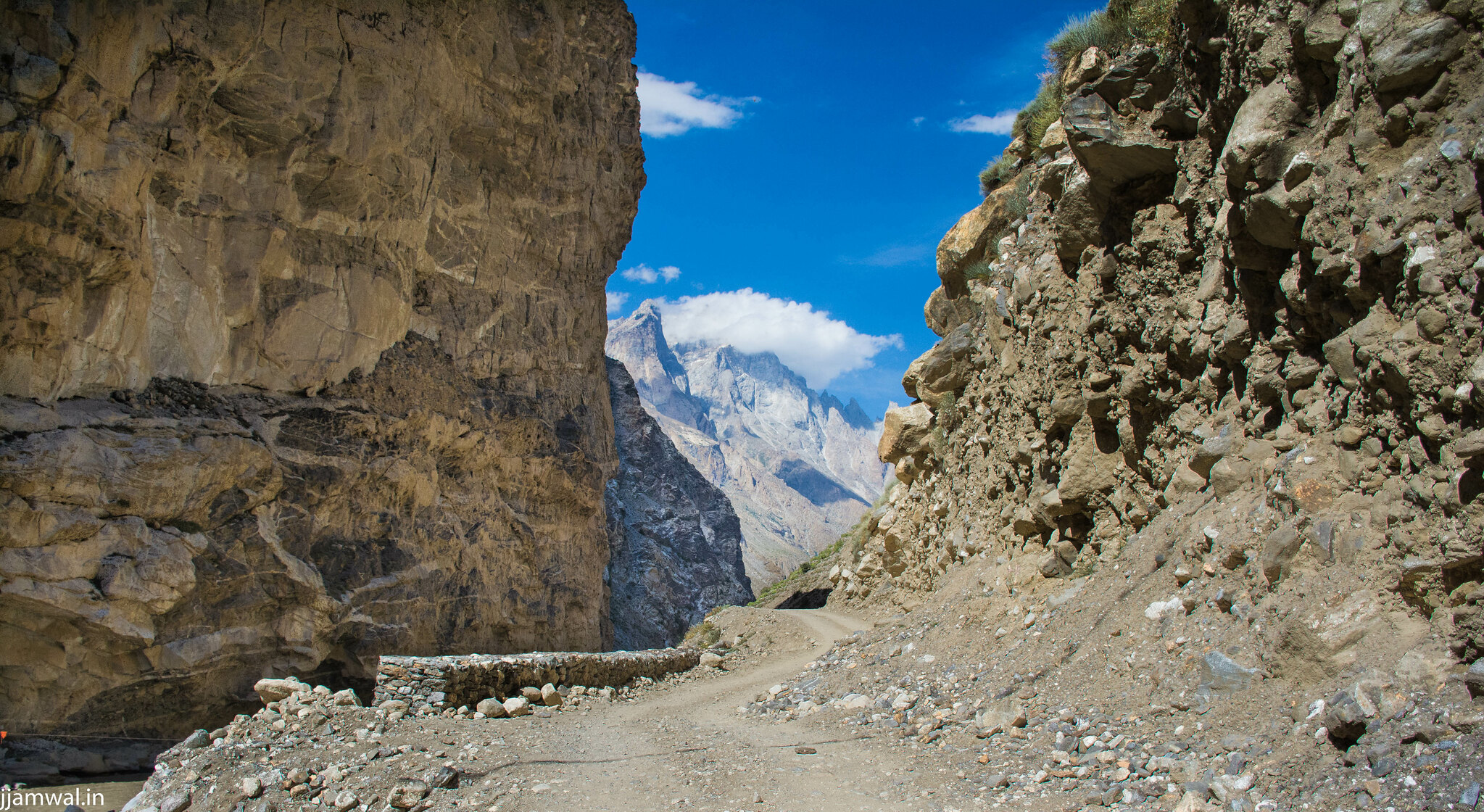
We stopped at a small settlement Kah (2920 m) on the way for some tea, food and rest after seeing dhaba signboards. But the first one we entered didn’t have anything. Other one across the road, seemed closed but it’s owner came out and asked us to go downstairs. There she served us some rajma chawal in a pretty dingy looking “dhaba” kind of place. But it was something after such a long drive. The family had a bunch of apricot trees too and they were drying them in open. They sell them for Rs 250 to 450 per kg. Here, we buy them for three to four times as much.
There is a big patch of empty land in the village overlooking Spiti river as it flows by. Seemed like a nice place for camping.
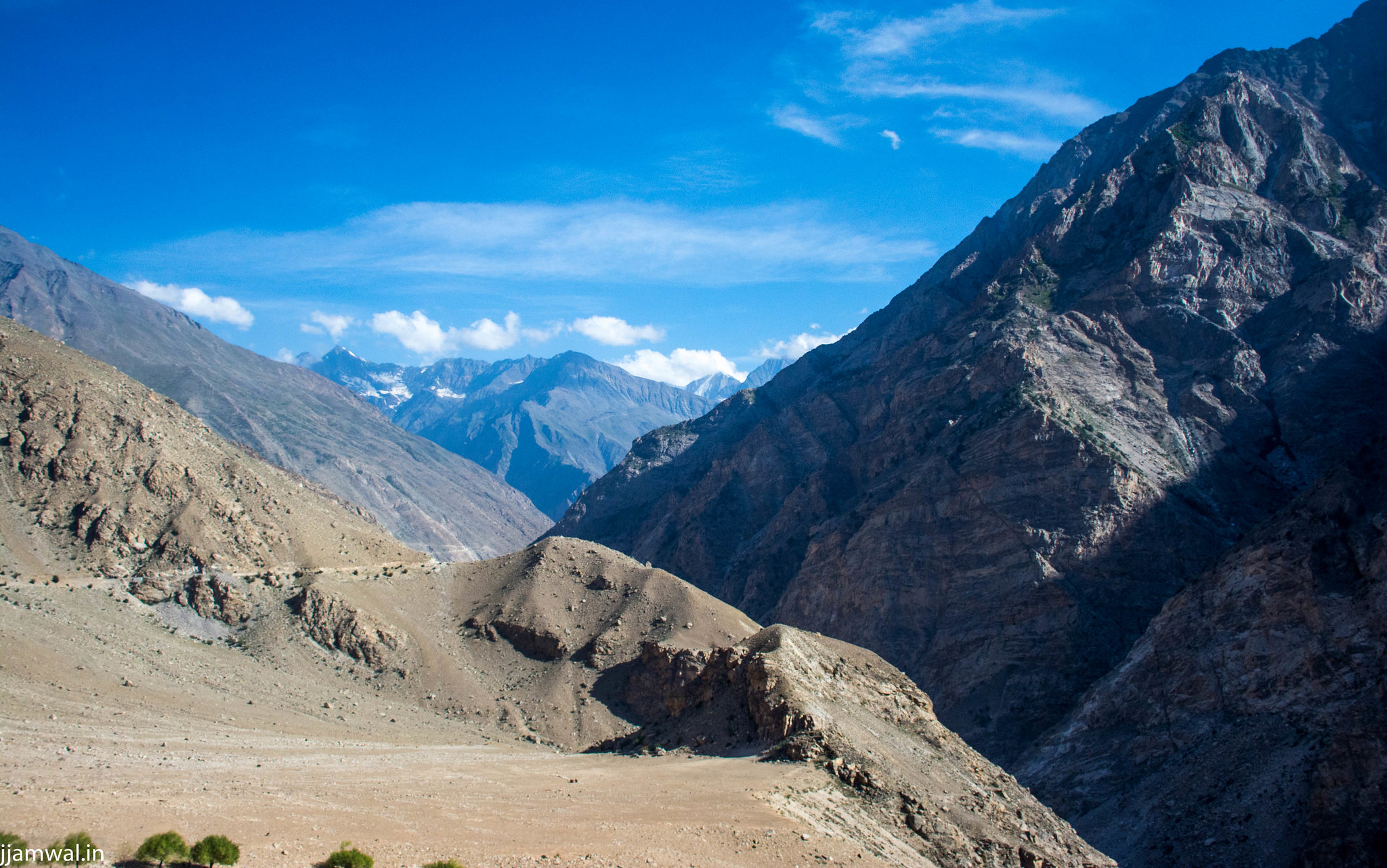
We then left for Nako and found another road going towards Leo village not too far from our destination. It was another mountain village like Ropa but a bit bigger and many fruit farms. Most of it is settled on a single mountain. There is a new bridge and remains of one old one. The latter was washed away in a flood in 2002. As we crossed the bridge, we stopped to ask a local. When he realised that we were going to Leo as tourists, he laughed and exclaimed, “What are you going to do there ? There’s nothing for tourists.” There are two more villages on this road, I don’t remember the names now, but seemed interesting enough for a short trip.
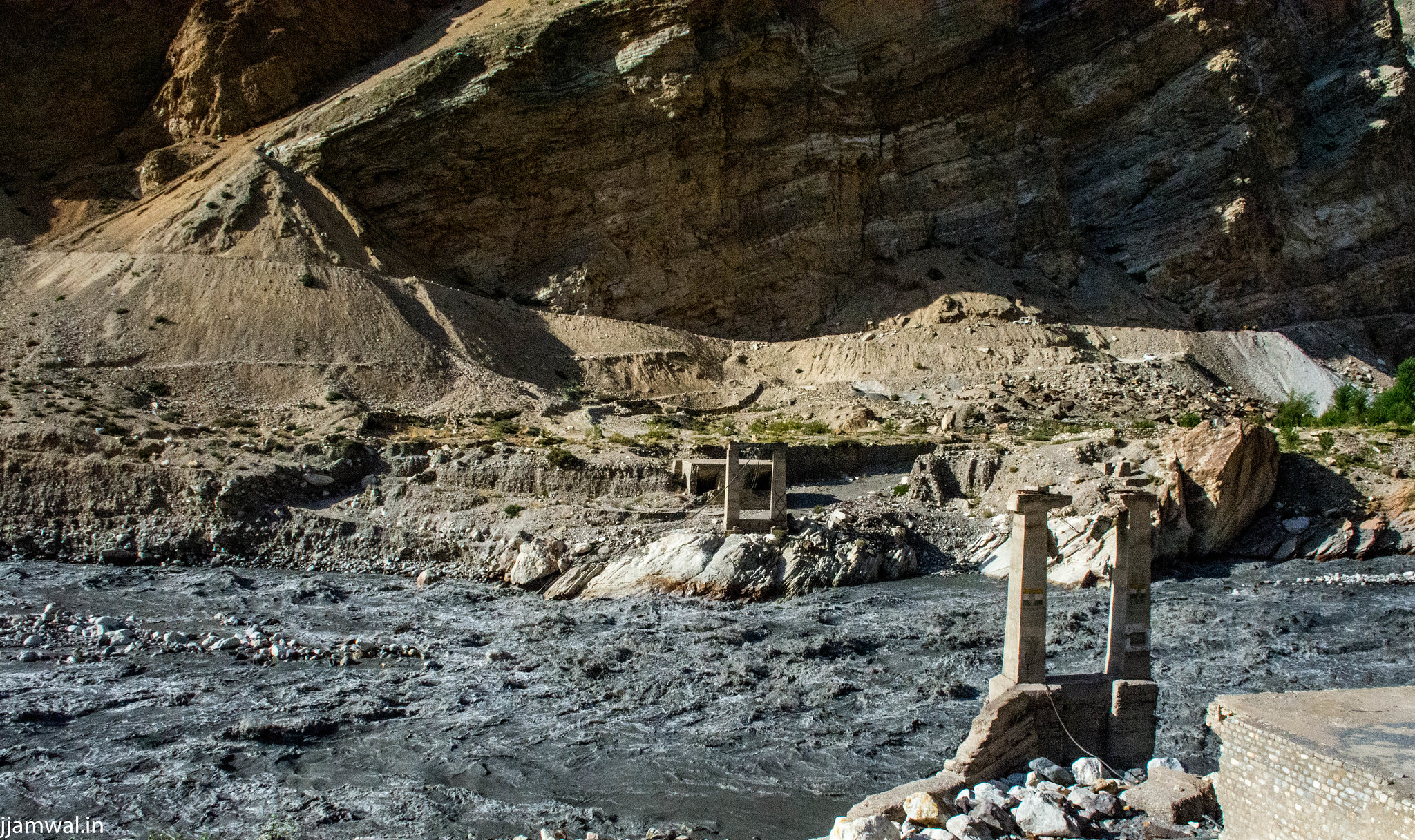
But we pressed on regardless and stopped at village bazaar for a cup of sugary tea. Two men were playing a game of carom inside the shop and we watched them as we sipped our chai. The people were friendly and seemed amused to have “tourists” in their village. Like Ropa, Leo didn’t have any accommodation either. So we left for Nako as the sunset was approaching. We were only 6-7 km away from Nako, when we passed a small roadside restaurant with guesthouse along the road. The driver was not very fond of Nako and I liked view of the mountains from that point. So we decided to halt there. The guest house was run a by a small family and had only 3 or may be 2 rooms. Bathroom was shared but we just needed to spend the night.
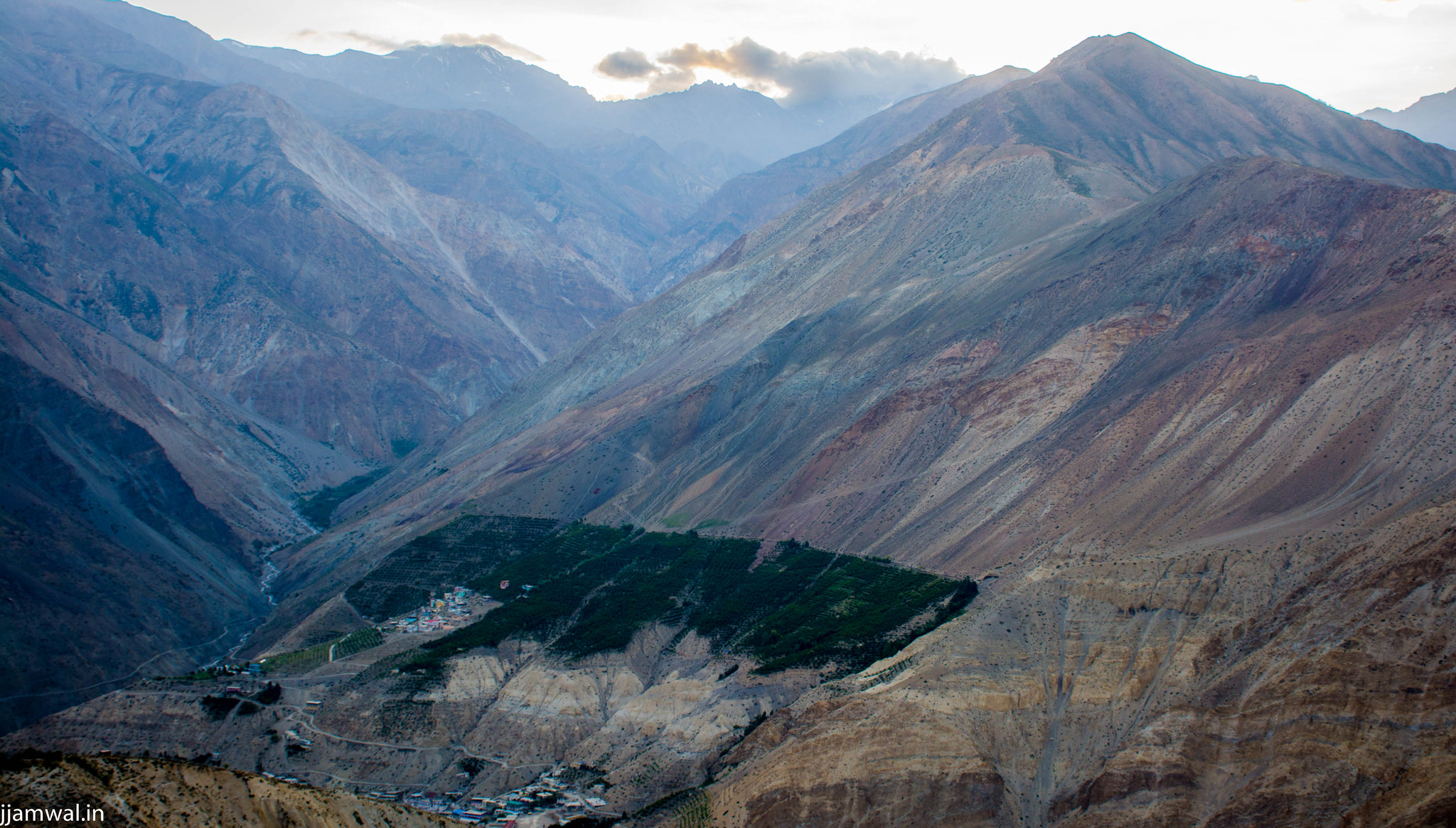
We had some tea after putting my luggage there and walked off to take some pictures. After dinner of Thupka noodles, I stayed on the roof, trying to get some pictures of milky way in the night sky before going off to sleep. There were too many bullet riders who made the task of taking pictures in dark very difficult, but that maybe is a story for some other time.
Previous Post : Kinnaur Lahaul Spiti Trip 2017: Sarahan and Chitkul
Leave a Reply